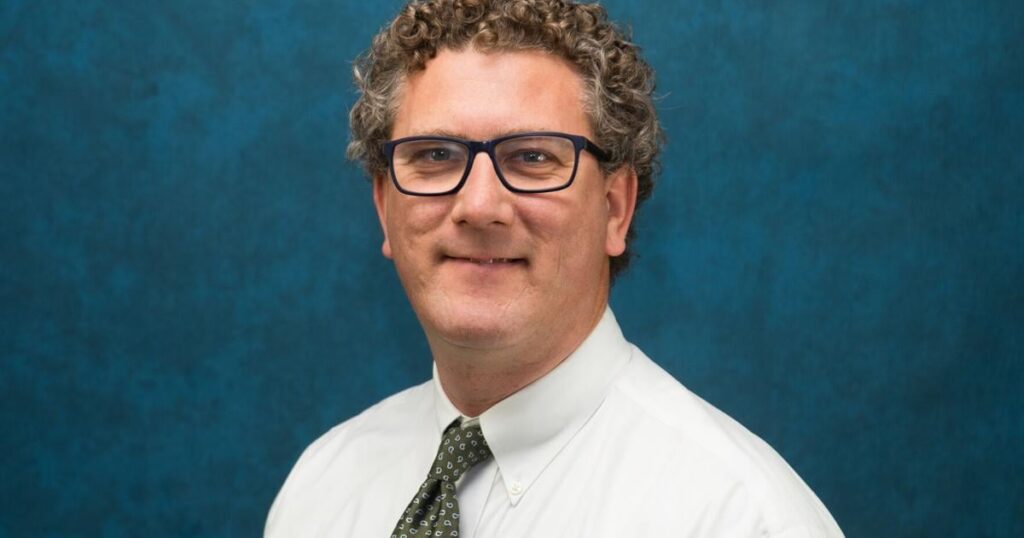After obtaining “three-fourths of a degree” in computer science in his early 20s, Brian Beabout knew he wanted to switch career paths.
“I decided that I needed to work with humans instead of machines,” he said. “I was much more drawn to the way teachers can change the trajectory of a student’s life.”
Beabout taught English and computer science at high schools in New Orleans and Mexico before moving to Boston for a year to work as a school administrator. After six years of teaching, he headed to Pennsylvania State University, where he received his principal’s license and a doctorate in instructional systems.
“I said, ‘If I’m going to really dedicate my life to understanding urban schools and how to improve them, I need to learn a little more,’” he said.
Beabout returned to New Orleans shortly after the city was devastated by Hurricane Katrina, where he witnessed the complete restructuring of the city’s school system. Eventually, he was hired as an assistant professor in the educational administration program at the University of New Orleans, where he helps to train principals for the job.
Leading a school is demanding work.
Between the 2020-21 and 2021-22 school years, roughly 1 in 10 public school principals left their positions, according to the National Center for Education Statistics — up a percentage point from five years earlier. The turnover rate is even higher for principals with more than 10 years of experience, 15% of whom left their jobs during the 2021-22 school year.
Principals can have a big impact on school performance. A study by the Wallace Foundation, a national nonprofit that seeks to improve education for disadvantaged children, found that principals’ contributions to student achievement were nearly as large as teachers’.
Beabout said he wants the principals he trains to understand their impact not only on student learning but also on communities as they prepare students to become productive citizens and leaders.
“There’s really no other job where you can do this type of community development work on a day-to-day basis,” he said.
This interview has been edited and condensed for clarity.
What does your program look for in the people it admits?
We admit students who have a strong teaching [background] and a really strong grasp of curriculum and pedagogy, so their feet are very grounded in what good teaching is.
To be a principal is to be a teacher of teachers, so they need to have high-quality instructional practices and the mindset that goes with that.
Are there any issues you focus on when it comes to training principals?
They need to have a vision of what academic performance for their student population looks like and be able to achieve that. But they also have to figure out how other people’s wishes for their children play into the vision of the school.
Otherwise, you end up with a cult of personality, with everybody chasing the vision that’s in the head of one individual. That’s not sustainable when that person leaves.
What kind of training goes into becoming a principal?
Once they come to us, we work with most of our students part-time for about two years. They take courses ranging from school law to school community relations to finance management.
We try to get them to understand that the key intention is that you’re there to support the lives of the students and adults that you have with you. We balance making sure that our students know how to plan a coherent curriculum, assess students’ progress, communicate that progress to them and their families, and improve the teaching methods of everybody around them.
Principals are important members of the community they work in, whether they live close by or not. So forming partnerships with local organizations, churches, elected officials, students’ families, is equally important.
What could be improved about how principals are trained?
It’s important that school leaders get training in different types of schools so that they can see the diversity of things that schools are working on and broaden their tool kit. Often, teachers will move through the ranks of their school or within their district and achieve a leadership position in the district that they’ve taught in, so they may not have a full grasp of that diversity.
Finding support to do broader or more extended internships, which might entail people leaving the school district they’ve taught at for many years to work with a different type of school, either demographically or different style of management, I think would show people that education is a pretty broad endeavor. Anything we could do to support placing people in different types of schools would be welcome.
What can principals do to improve their school environments?
We often forget about the ongoing learning that people in leadership positions need to do. There are lots of useful solutions if only we have leaders who have the time and space to do the learning they need to continue to do.
And like teaching, it’s a bit of a lonely profession in that most of the day, you’re the only one of you who you talk to. So finding ways for principals to connect with one another is crucially important — both for keeping people on the job and having them be able to solve problems that they might struggle with on their own.

